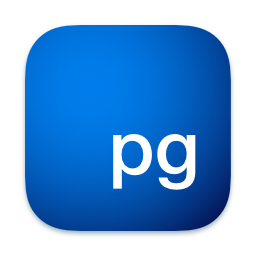An early ambition with the design of Paragraphic was to make the feature set and structure close to the SVG standard. This was to facilitate export of designs to SVG, but also to import SVG content more seamlessly from other sources.
While far from feature complete I’ve now implemented at least basic SVG import support, where imported SVG content from files or the pasteboard can be parsed into native Paragraphic path and group elements. This then means that you can apply the same transformations and changes to the individual elements that you can in groups generated in Paragraphic.
For example creating dynamic variations of an imported SVG image, like the dear old Godot icon.svg here. Or maybe just pasting in a group of objects from another vector illustration system, applying some complex transformations and modifications and then copying the output right back into the other system.
Needless to say this is a feature that I think will enable a lot of very interesting use-cases, and something I’ve long wanted to implement. It’s currently limited to path/shape elements and groups, and doesn’t support fancy stuff like svg symbols, gradients or filters. But there’s still a lot you can do with it already.
Changes and improvements
UI/UX
- New selection display settings to toggle on/off showing selection outlines and transform handles.
- Improved click selection of layers in the same group as the current selected layer.
- Improved the getting started windows with little video snippets instead of just static screenshots.
Generation
- Imported SVG images can now be parsed into separate paragraphic elements that can be modified individually.
